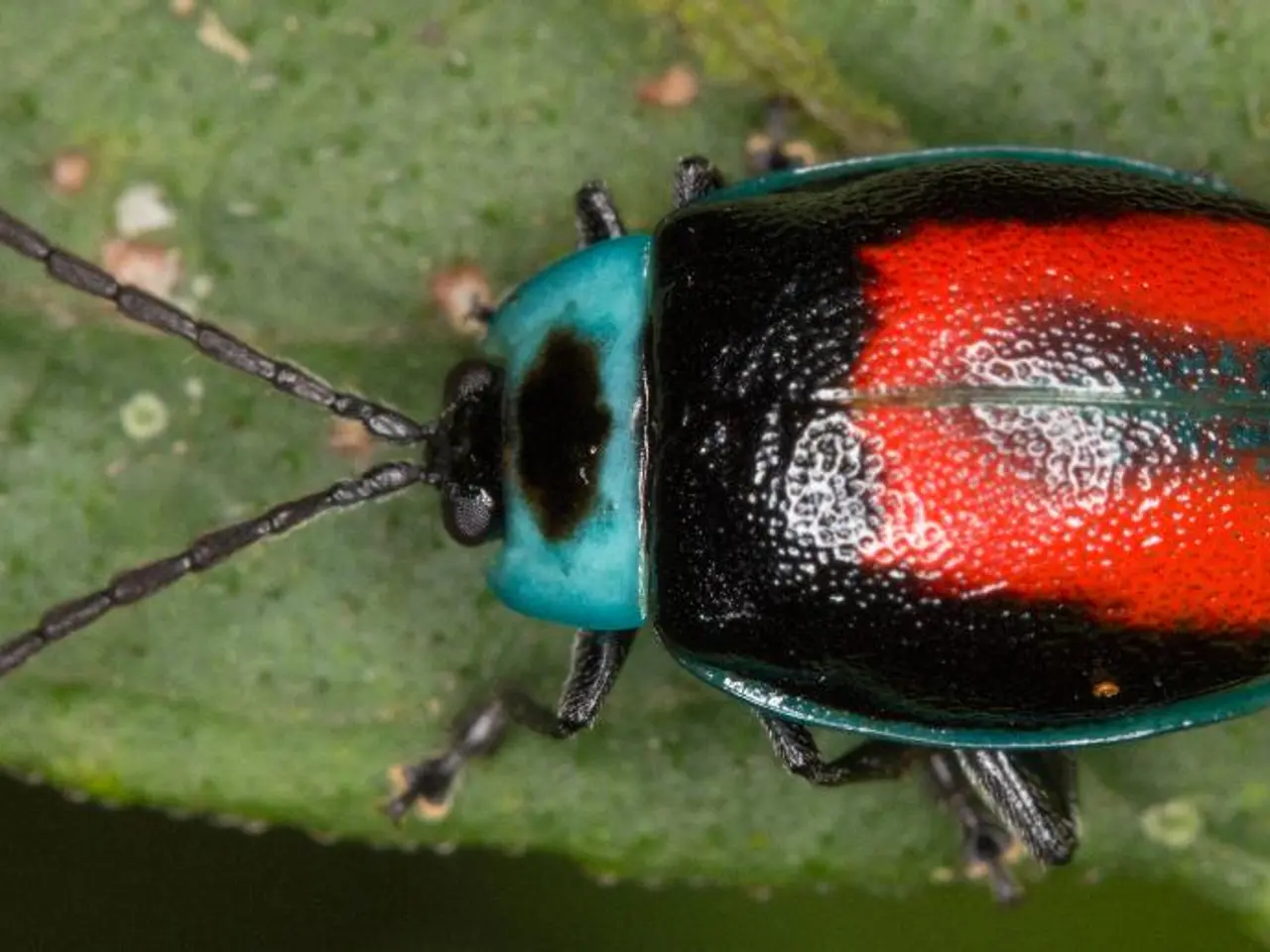Harmful Pests That Devour Blossoms and Methods to Eliminate Them
In the vibrant world of gardening, a variety of insects can pose a threat to the beautiful blooms and flourishing plants. Here's a rundown of some common pests that gardeners might encounter and how to identify them.
Pillbugs, also known as sow bugs, are isopods often found in large numbers in compost and potting mixes. While they generally do not pose a significant threat to flowers, their presence might signal a less-than-ideal environment for plants.
On the other hand, caterpillars such as cabbage loopers and tomato hornworms, Japanese beetles, plum curculio, and viburnum leaf beetles are known for causing severe damage to both foliage and flowers in flower gardens. These pests chew on leaves, flowers, and fruits, often leaving holes, skeletonized foliage, or completely defoliating plants.
Japanese beetles, for instance, feed by chewing on leaves and flowers, causing significant damage. The viburnum leaf beetle, specific to viburnum plants, creates holes and defoliates these shrubs, potentially killing them after repeated attacks over years.
Cucumber beetles, Japanese beetles, and several other species of beetles are also known to cause severe damage to both foliage and flowers in flower gardens. Weevils can feed on flowers with large, daisy-like blooms, causing circular or crescent-shaped holes across petals.
Leafhoppers are insects that can damage flowers by sucking the sap from the leaves and petals, which can lead to discoloration, curling, and eventual death of the plant. Thrips are garden pests that feed on the sap of flowers, causing the decline and potential loss of plants, and can damage the buds or cause them to become disfigured.
In most instances, organic growers can regain control of their plants through the patient use of manual techniques like hand-picking. For other pests, such as leafhoppers and thrips, organic sprays like insecticidal soaps might be necessary. It's essential to identify whether the damage is caused by chewing insects (holes and eaten leaves) or sucking insects (yellowing, wilting from sap removal) to choose the right treatment.
Gardeners should always try to find alternatives to chemicals, as many compounds are harmful to beneficial insects. Contact your local garden center expert or extension service for detailed information on the safe use of any chemicals and safer alternatives.
Remember, a healthy garden is a balance of various life forms, and understanding the role of these common pests can help gardeners maintain a thriving garden ecosystem.
[1] University of California Agriculture and Natural Resources. (2021). Garden Pests: Caterpillars. Retrieved from https://ucanr.edu/sites/UCMasterGardeners/files/281418.pdf [2] Cornell University Extension. (2021). Black Vine Weevil. Retrieved from https://extension.cornell.edu/nystate/topics/black-vine-weevil [3] Michigan State University Extension. (2021). Japanese Beetle. Retrieved from https://www.canr.msu.edu/news/japanese_beetle [4] University of Maine Extension. (2021). Plum Curculio. Retrieved from https://extension.umaine.edu/publications/4451e/ [5] University of Massachusetts Amherst Extension. (2021). Thrips. Retrieved from https://ag.umass.edu/landscape/fact-sheets/thrips
In the quest for maintaining a thriving home-and-garden ecosystem, gardeners might also find it beneficial to focus on enhancing the lifestyle of their plants by creating a friendly environment that minimizes the presence of destructive pests such as caterpillars, Japanese beetles, cucumber beetles, and thrips. Proper identification of these pests, knowing whether they chew on leaves and flowers (leading to holes and eaten leaves) or suck sap (causing discoloration, curling, or plant death), is crucial in choosing the right organic treatment or manual technique.





